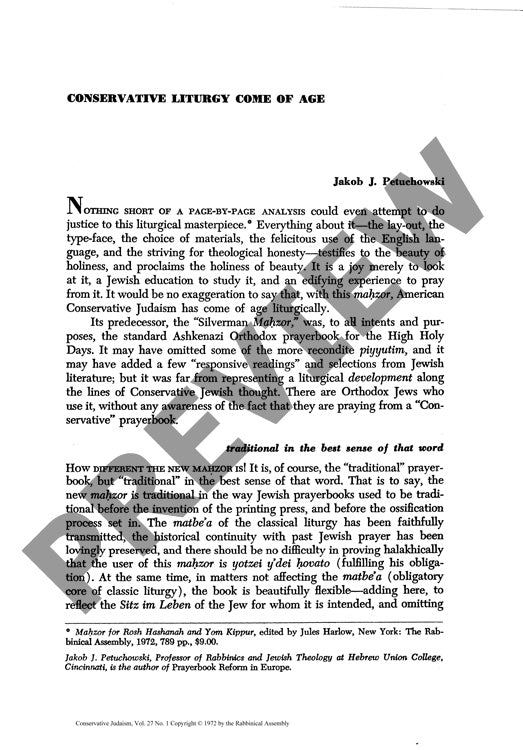Conservative Liturgy Come of Age
Couldn't load pickup availability
The 1972 Conservative "Mahzor for Rosh Hashanah and Yom Kippur," edited by Jules Harlow, marked a watershed moment in modern Jewish liturgical development, successfully navigating between tradition and innovation. Through comparative liturgical analysis of Hebrew texts, English translations, and editorial decisions, this examination reveals how the mahzor crystallized a distinctly Conservative Jewish identity while maintaining halakhic parameters. Set against Orthodox predecessors and Reform alternatives, the prayerbook masterfully incorporated contemporary concerns like Holocaust remembrance and Israeli statehood. Its innovative features—abbreviated readings, alternate Torah portions, and flexible rubrics—addressed modern worship needs while preserving traditional prayer structure (matbe'a). The mahzor's "Catholic Israel" philosophical approach drew from diverse textual sources spanning classical to contemporary Jewish thought, though some inconsistencies emerged in handling sacrificial passages. Despite these minor shortcomings, Harlow achieved an unprecedented balance between fixed tradition (keva) and spiritual intention (kavvanah), complemented by exceptional English renditions. This liturgical work ultimately stands as the most successful modern adaptation of traditional Jewish prayer, serving both historical continuity and contemporary relevance for American Conservative Judaism.

More Information
-
Physical Description
-
Publication Information
Published 1972
ISBN
-
Publication Credits
Jakob Petuchowski

